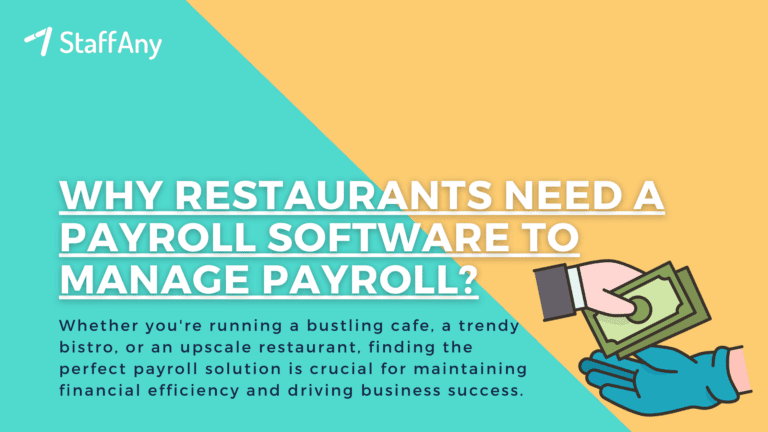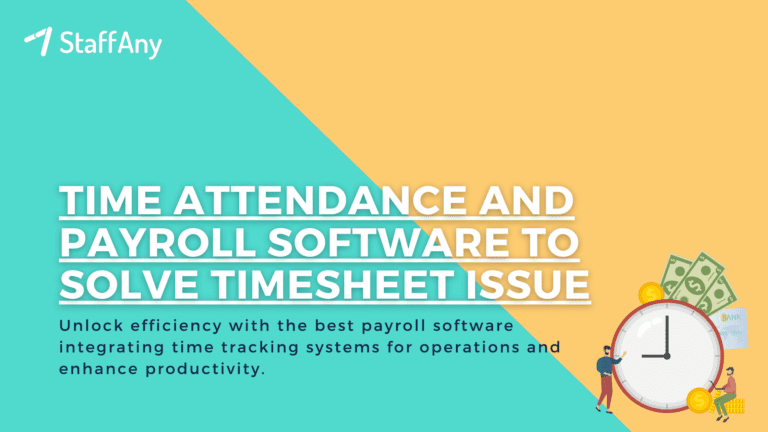In the dynamic and competitive world of the restaurant industry, managing costs effectively is essential for success. One of the key aspects of financial management is food and beverage cost control. By implementing strategic cost control measures, restaurant owners can optimise their operations, boost profitability, and maintain a competitive edge in the market.
In this article, we will explore what food and beverage cost control entails and how it can significantly impact a restaurant’s bottom line. Let’s get started!
What is Cost Control?
Cost control, in the context of the food and beverage industry, refers to the process of monitoring, managing, and optimising expenses related to the procurement, production, and serving of food and beverages.
It involves taking proactive steps to minimise wastage, reduce operational inefficiencies, and prevent unnecessary expenditures while maintaining the quality of offerings. Effective cost control ensures that a restaurant operates within its budget and maximises profits.
Read more: Restaurant Management Plan: Benefits & Development
Why is Cost Control Important in Food and Beverage Services?
Cost control is of paramount importance in the food and beverage industry for several compelling reasons. Let’s delve into the key factors that highlight its significance:
1. Enhanced Profitability
One of the primary reasons for implementing effective cost-control measures in food and beverage services is the direct impact it has on a restaurant’s profitability. By diligently managing expenses and optimising the use of resources, restaurant owners can increase their profit margins significantly.
Even small reductions in costs can translate into substantial financial gains, allowing establishments to reinvest in their business or expand their offerings to attract more customers.
2. Sustainable Business Operations
For a restaurant to thrive in a competitive market, it must maintain sustainable business operations. Cost control plays a vital role in ensuring that a restaurant operates within its budgetary constraints without compromising on quality and service.
By carefully monitoring expenses, restaurateurs can steer clear of financial pitfalls and establish a solid foundation for long-term growth and success.
3. Consistent Food Quality
Customers’ expectations in the food and beverage industry are high, and consistent food quality is a key factor in attracting repeat business. Cost control practices help maintain the quality of ingredients and prevent wastage, ensuring that each dish served meets the customers’ expectations.
Satisfied patrons are more likely to become loyal customers and advocates for the restaurant, leading to positive word-of-mouth and increased footfall.
4. Adaptability to Market Changes
The restaurant industry is subject to fluctuations in ingredient prices, economic conditions, and customer preferences. Effective cost control empowers restaurants to adapt swiftly to these changes. By carefully managing expenses, businesses can offset cost increases and maintain competitive prices.
Additionally, cost control measures enable the agile introduction of new dishes and beverages to cater to evolving consumer tastes.
5. Financial Resilience
Cost control fosters financial resilience, which is crucial for weathering unforeseen challenges. Whether it’s a sudden downturn in the economy or unexpected market disruptions, restaurants that have optimised their costs are better positioned to withstand such uncertainties.
Financial stability also enhances the restaurant’s ability to invest in staff training, marketing efforts, and infrastructure improvements, all of which contribute to its long-term success.
Read more: Top 3 Trends Driving the F&B Industry in Malaysia
How to Calculate Your Overall Food Cost Percentage?
Calculating the overall food cost percentage is crucial to assess the effectiveness of cost control efforts. It is the ratio of the total cost of food used in a specific period to the total revenue generated from food sales during the same period. The formula to calculate food cost percentage is as follows:
Food Cost Percentage = (Total Cost of Food ÷ Total Revenue from Food Sales) × 100
For example, if a restaurant spends £5,000 on food and generates £20,000 in food sales during a month:
Food Cost Percentage = (£5,000 ÷ £20,000) × 100 = 25%
A food cost percentage of 25% indicates that 25% of the restaurant’s food revenue is used to cover food expenses. Monitoring this percentage regularly helps identify cost control successes and areas for improvement.
5 Cost Control Methods
Implementing effective cost control methods is the key to optimising financial management in food and beverage services. Let’s explore five proven strategies that can help restaurants manage expenses, boost profitability, and maintain a competitive edge in the industry:
1. Inventory Management
Inventory management is a fundamental cost control method that involves closely monitoring and managing the stock of ingredients and supplies. Maintaining a well-organised inventory system allows restaurant owners to avoid overstocking or stockouts, which can lead to unnecessary expenses or missed revenue opportunities.
Regularly track stock levels, set par levels for each item, and implement the first-in-first-out (FIFO) method to minimise food wastage. By having a clear view of inventory, restaurant managers can make informed purchasing decisions and optimise ingredient usage, ultimately reducing costs.
2. Menu Engineering
Strategic menu engineering is another powerful tool for cost control. Carefully analyse the profitability of each menu item by considering both its popularity and the cost of ingredients. Classify dishes into categories such as “stars” (high-profit items with high popularity), “plowhorses” (low-profit items with high popularity), “puzzles” (high-profit items with low popularity), and “dogs” (low-profit items with low popularity).
Use this insight to promote high-margin items and rework or remove low-margin ones. By engineering the menu to prioritise dishes with optimal profitability, restaurants can increase revenue and better manage food costs.
3. Supplier Negotiation
Building strong relationships with suppliers and negotiating favourable terms for the procurement of raw materials can significantly impact a restaurant’s cost control efforts. Establishing long-term contracts or bulk purchasing agreements can lead to volume discounts and cost savings.
Regularly compare prices and quality from alternative suppliers to ensure you are getting the best deals. Cultivating healthy relationships with suppliers can also lead to preferential treatment and better service, further contributing to cost efficiency.
Read more: The Importance of Workplace Safety in F&B
4. Waste Reduction
Waste reduction is both an environmentally conscious and financially prudent cost control measure. Restaurants can implement various waste reduction strategies, such as accurate portion control, staff training on minimising plate waste, and creative use of leftovers.
Conducting regular waste audits can help identify patterns of wastage and provide insights into areas that require improvement. By minimising waste, restaurants can reduce their expenses while contributing to sustainability efforts.
5. Staff Training and Motivation
Well-trained and motivated staff are invaluable assets in the quest for effective cost control. Educate employees about the importance of cost control and involve them in identifying cost-saving opportunities. Provide comprehensive training on inventory management, portion control, and waste reduction techniques.
Consider implementing incentive programs to reward staff members for their contributions to cost-saving initiatives. When employees are actively engaged in cost control efforts, they become champions of efficiency, resulting in a more streamlined operation and enhanced profitability.
In the fiercely competitive world of food and beverage services, mastering the art of cost control is a crucial component of achieving sustainable success. By implementing the discussed cost control methods, restaurant owners can proactively manage their expenses, enhance profitability, and maintain the quality of offerings to delight their valued customers.
Embracing these strategic approaches will not only bolster the financial health of establishments but also ensure their resilience in the face of industry challenges. As the restaurant landscape continues to evolve, the importance of cost control remains unwavering, serving as a guiding principle for thriving businesses.
To streamline your restaurant’s operations and enhance cost control efforts, consider utilising a roster making app like StaffAny. This innovative tool empowers you to efficiently manage staff schedules, monitor attendance, and optimise labour costs with ease.
Experience the benefits of seamless workforce management and start your journey toward greater profitability and operational efficiency today. Your restaurant’s success is just a click away!











